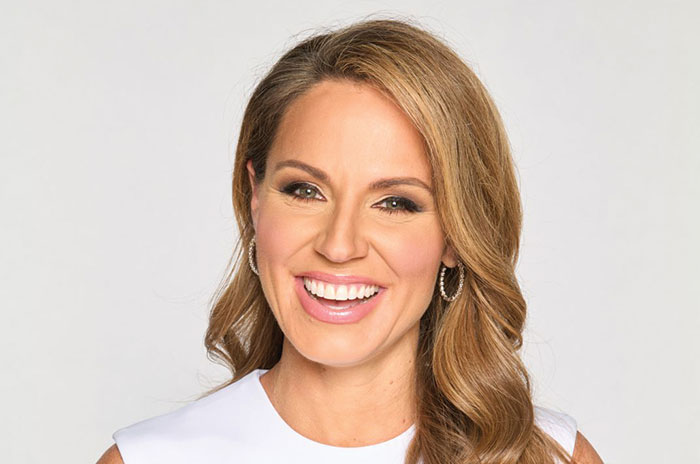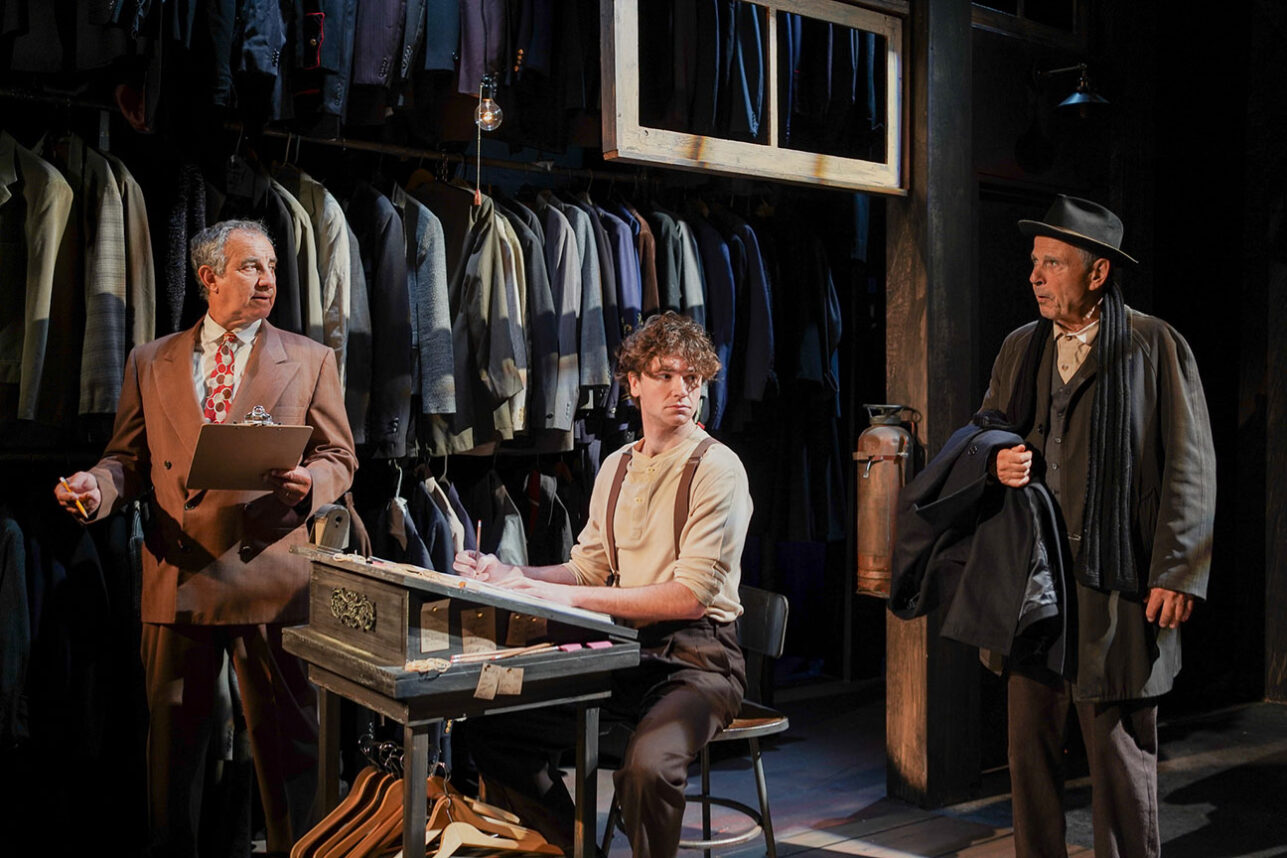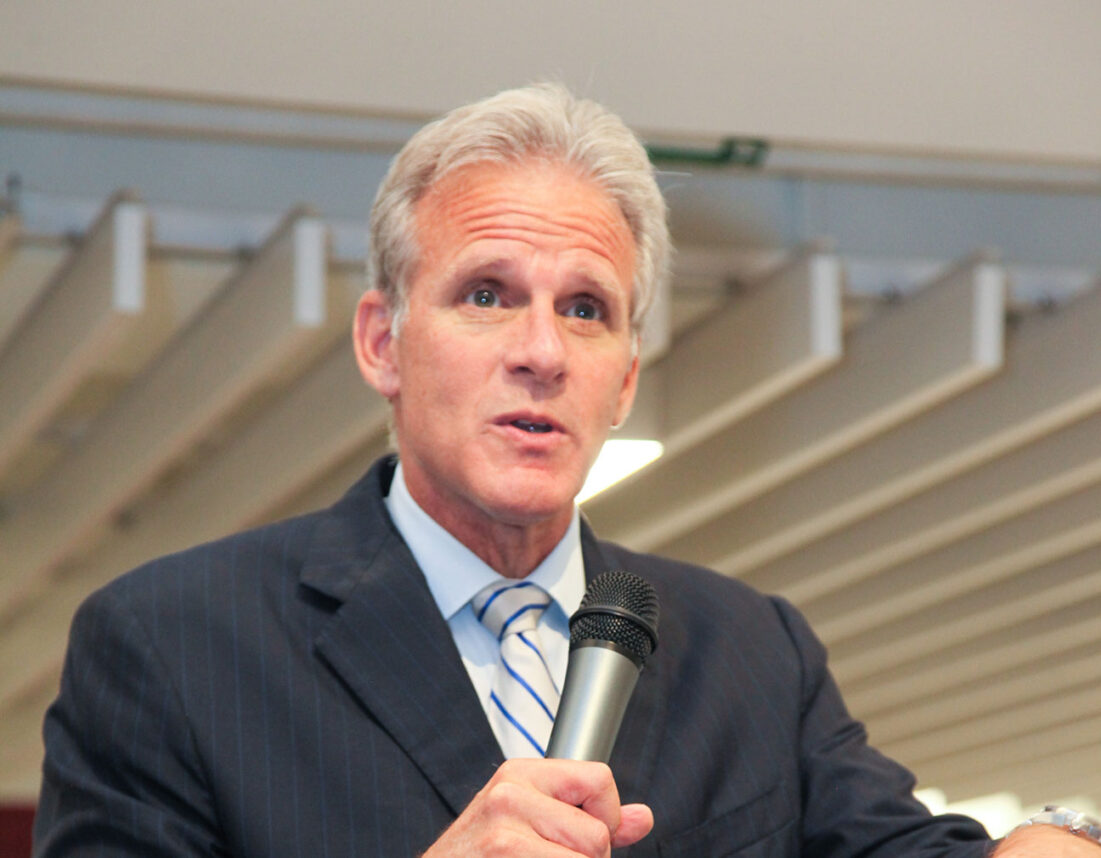At this year’s Oscars ceremony film editor William Goldenberg will have the rare and coveted distinction of competing against himself.
Goldenberg is nominated not only for editing Ben Affleck’s “Argo,” the story of how a CIA operative (played by Affleck) sneaked six American embassy workers disguised as a science fiction film crew out of revolutionary Iran, but also for his work with editor Dylan Tichenor on Kathryn Bigelow’s “Zero Dark Thirty,” a thriller about the hunt for Osama bin Laden starring Jessica Chastain as the CIA agent who doggedly spearheads the search.
Goldenberg, 53, has earned previous Oscar nominations for his work on Michael Mann’s “The Insider” and 2003’s “Seabiscuit.” But he is the first film editor to receive dual nominations since 1990, when Walter Murch earned nods for both “Ghost” and “The Godfather, Part III.” This year Goldenberg also happens to be competing against his mentor, Michael Kahn (“Lincoln”), who arranged for Goldenberg’s first film editing credit on 1993’s “Alive.”
“It was surreal,” Goldenberg recalled of that early morning moment when the nominees were announced on Jan. 10. “I was so surprised and elated.”
Goldenberg, who edited Affleck’s 2007 directorial debut, “Gone Baby Gone.” got the invitation to work on “Argo” in February 2011, a task that required assembling and cutting one-million feet of film – about 175 hours of raw footage — for this film based on a jaw-dropping true story.
But his biggest challenge, Goldenberg said, was in balancing the movie’s wildly divergent tones: The action shifts from tense CIA maneuvers to the human drama of the six fugitives to a Hollywood satire of film producer Lester Siegel (Alan Arkin) and makeup artist John Chambers (John Goodman), who set up a fake sci-fi flick company in Los Angeles. “We were very [picky] about our juxtapositions,” Goldenberg recalled. “We wouldn’t directly cut from a man being shot in the street to Alan Arkin saying, ‘If I’m going to direct a fake movie, it’s gonna be a fake hit.’”
One tricky sequence includes a “reading” of the bogus film, set in a Los Angeles hotel, which was shot in a glossy, colorful style to reflect the Hollywood environs. Complicating the drama, the action cuts back and forth with a mock execution of hooded hostages in Tehran, (also shot on a set in L.A.) made to look like grainy, newsreel-style footage. Images of the filmmakers and actors, wearing cheesy outer-space costumes for the faux film, are juxtaposed with the footage of a grim basement where the prisoners are lined up against a wall and shot, only to discover that the execution was faked and intended only to terrorize and humiliate them.
One key to seamlessly merging these two very different storylines was toning down the amusing aspects of the Hollywood reading:
“Ben and I chose the performances very carefully,” Goldenberg said. “We wanted the jokes to seem more like throwaway lines, rather than like rim-shot performances. We didn’t want the comedic elements to be too over-the-top.”
While preparing to edit Argo’s opening sequence, in which protestors storm the American Embassy in 1979, Goldenberg watched hours of newsreel footage shot at the time of the events, he said, “to get the feel of the crowd, and how angry and organized they were.” But the filmmakers created their own footage of the takeover, shot with hand-held cameras amidst crowds of extras in Turkey and Los Angeles, rather than intercutting with real archival footage.
“We found that when we tried that, it was jarring and took people out of the moment,” Goldenberg said. Even so, he edited the sequence to reflect the real events of the takeover as much as possible, and often cut away from protesters in the middle of a movement or action to create a sense of panic.
Capturing the drama of the American’s harrowing escape to the Tehran airport in a 40-minute sequence at the end of the film turned out to require far more subtlty than the usual Hollywood chase scene. “Initially I tried setting it to action music, which just sounded silly,” he said. “It made me realize that this sequence wasn’t about action, but about building tension and suspense.” When Goldenberg cut between the CIA agents, the Republican Guard and the terrified embassy workers, “I tried to make each [segment] end with an unanswered question, so that the audience would be breathless, wondering what was going to happen next.”
Just two days after Goldenberg finished his work on Argo,” Bigelow hired him to help Dylan Tichenor cut the nearly two-million feet of footage she had shot for “Zero Dark Thirty,” a film that has criticized by some pundits, including members of Congress, for allegedly sanctioning torture as an effective information gathering tool. “My opinion of those scenes, and our opinion as filmmakers, is that depiction is not endorsement,” Goldenberg said of the film’s scenes of waterboarding prisoners and other grueling torture sequences. “As Kathryn has said, part of art is showing the ugly stuff; we’re not saying torture worked or didn’t work, just that this is a part of what happened in response to Sept. 11.”
“Initially there was a lot more of those scenes,” Goldenberg added, but we decided that it was enough that the audience understood how difficult this was without sticking their noses in it.”
The attitude toward torture of the film’s central character of Maya, a CIA agent played by Jessica Chastain, shifts over the course of the film: “We wanted to see an evolution in her character, to see how she’s at first revolted and can barely look at it, to where she’s actually participating, because her drive to find Bin Laden is so unrelenting,” Goldenberg said.
Her quest culminates when the Navy SEALS, following Maya’s intuition about bin Laden’s whereabouts, storm a secret compound in Abbottabad, Pakistan, on a moonless night in May 2011, and in the editing room, there was a delicate balancing act between maintaining authenticity and moviemaking. “The difficulty was making it true to what happened while keeping it exciting, because the raid wasn’t what people necessarily might have thought – the SEALS didn’t charge in, storm up the stairs and exchange a lot of gunfire; it was basically slow-moving and methodical,” he said. “Kathryn referred to it as a march, or a wave of death — these trained killers walking through the compound in the pitch-black night, never knowing what they might find next. That’s what we tried to do in the editing — keeping the audience wondering what was just around the corner.”
Goldenberg’s anticipation of the upcoming Academy Awards ceremony is dampened only by the fact that both Affleck and Bigelow were overlooked in the directing category, although both films are up for the best-picture award. (It’s surmised that Bigelow was snubbed, at least in part, because of the torture controversy surrounding her film.)
“Having cut their movies, I know what great directors they are,” he said.





















 More news and opinions than at a Shabbat dinner, right in your inbox.
More news and opinions than at a Shabbat dinner, right in your inbox.